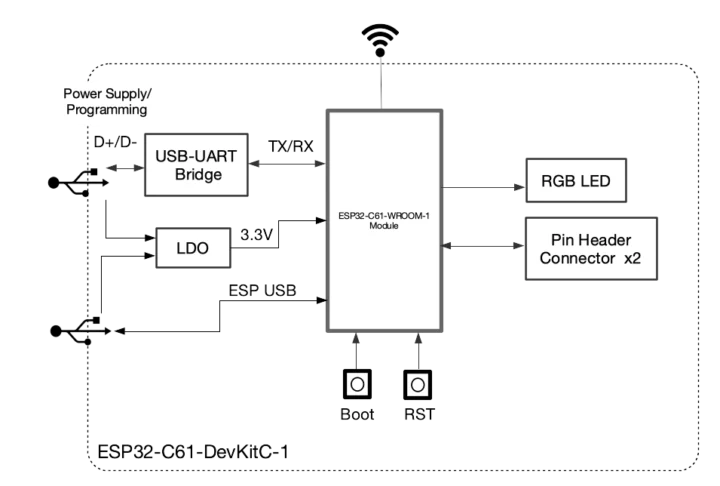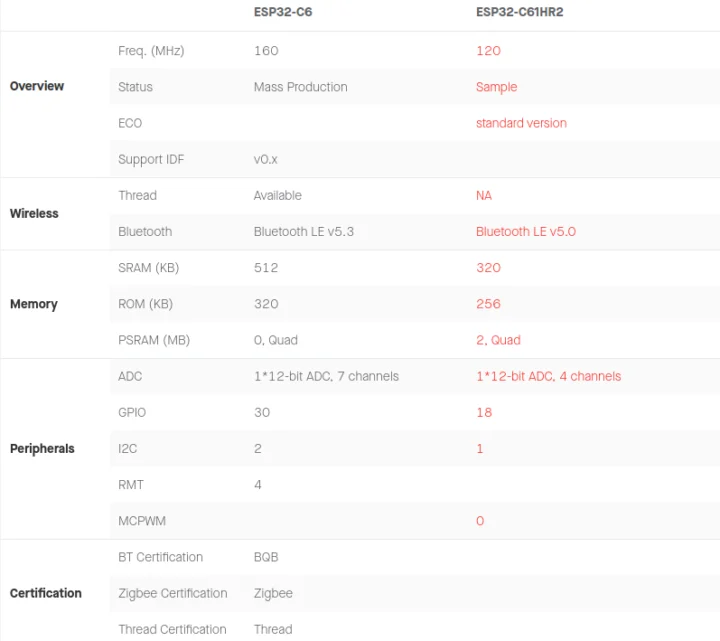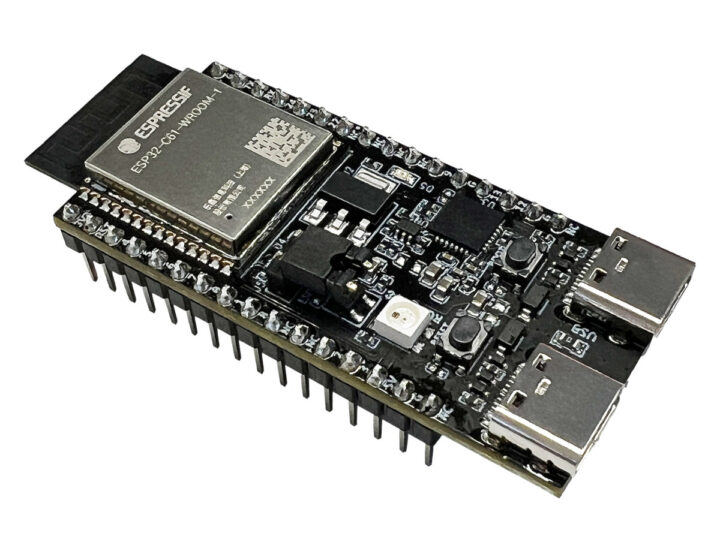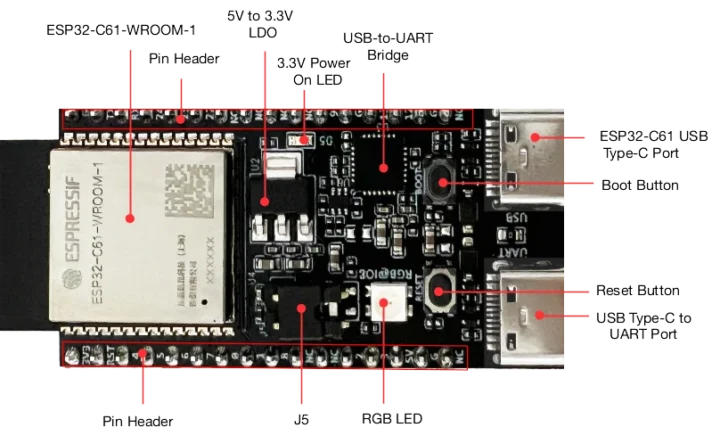The ESP32-C61-DevKitC-1 is a development board based on the upcoming ESP32-C61 low-cost WiFi 6 and Bluetooth LE 5.0 SoC that was first unveiled in January 2024, and offered with two USB-C ports, two buttons, an RGB LED, and GPIO headers.
In my 2024 year in review report, I noted that Espressif would likely launch the ESP32-C5 dual-band WiFi 6 SoC in 2025, but I completely forgot about the ESP32-C61 which is basically a cost-down version of the ESP32-C6. I’ve now noticed the documentation of the ESP32-C61-DevKitC-1 development board and ESP32-C61-WROOM-1 module is now available, so we have more details about those and the ESP32-C61 itself, so let’s have a closer look.
ESP32-C61-DevKitC-1 specifications:
- Wireless module – ESP32-C61-WROOM-1
- SoC – ESP32-C61HR2
- CPU – Single 32-bit RISC-V core clocked up to 120MHz
- Memory – 320KB SRAM, 2MB PSRAM
- Storage – 256KB ROM
- Wireless – WiFi 6 and Bluetooth LE 5.0
- Storage – 8MB QSPI flash
- Antenna – PCB antenna
- SoC – ESP32-C61HR2
- USB
- USB 2.0 (full speed up to 12 Mbps) Type-C port for power, flashing firmware, communication with the chip using USB protocols, and JTAG debugging.
- USB Type-C port for power, flashing firmware, and USB-to-UART communication via onboard chip supporting up to 3 Mbps
- Expansion – 2x 16-pin headers for all GPIOs of the ESP32-C61 SoC (up to 18x GPIO, 1x I2C, 12-bit ADC 4-channel); breadboard compatible
- Misc
- 3.3V Power LED
- RGB LED driven by GPIO8
- Boot and Reset buttons
- J5 jumper for current measurement
- 32.768 KHz (RTC) and 48 MHz crystals (Note: the 32 KHz crystal is not mounted by default, and the XTAL_32K_P and XTAL_32K_N pins are used as GPIO0 and GPIO1).
- Power Supply
- 5V via either USB-C ports or 5V and GND pins
- 3.3V via 3V3 and GND pins
- 5V to 3.3V LDO
- Dimensions – TBD

The ESP32-C61 will be supported by the ESP-IDF 5.4 which is yet to be released (now Release Candidate 1) but should be fairly soon. You can read more about it on the board’s user guide.
I’ve already highlighted some of the changes between ESP32-C6 and ESP32-C61 in the specifications, but you can also refer to the side-by-side comparison in the table below (ESP32-C61H2 is the only ESP32-C61 part listed so far).

While we know the ESP32-C61 will be cheaper than the ESP32-C6, we don’t know exactly by how much since the ESP32-C61 is still at the sampling stage. There aren’t any samples available on Espressif Systems’ AliExpress or Amazon stores, but you may be able to get some early samples of the chip, module, or devkit if you contact sales. A few more details may become available on the product page over time.

Jean-Luc started CNX Software in 2010 as a part-time endeavor, before quitting his job as a software engineering manager, and starting to write daily news, and reviews full time later in 2011.
Support CNX Software! Donate via cryptocurrencies, become a Patron on Patreon, or purchase goods on Amazon or Aliexpress







PSRAM in an Espressif RISC-V part. Interesting.
Is that a first? Well P4, maybe, but in the ones with radios.
The already-announced H4 will also have PSRAM (in addition to getting a second core), as will the C5, so I think all RISC-V Espressif parts will support PSRAM from here on out…
What I’m curious about is when they’ll announce a successor to the C6 that adds PSRAM support, doubles the core count (while keeping the LP core), and bumps BT to 5.4 (which is what the H4 is due to get). I doubt they’d call it the C7, so perhaps C12?
The H4 have really bad rf. The TX power is only 9dBm instead of the normal 20dBm. If you know how dBm works, you would know how bad that is.
Better name would be C21. Disappointing from specs….
Kinda weird to add PSRAM to this crippled thing
The C6 is their first shipping WiFi 6 SoC, so C61 makes sense as a name for another WiFi 6 product in that regard… if we ignore the existence of the C5 😉
“2MP PSRAM” -> You mean, “2MB”?